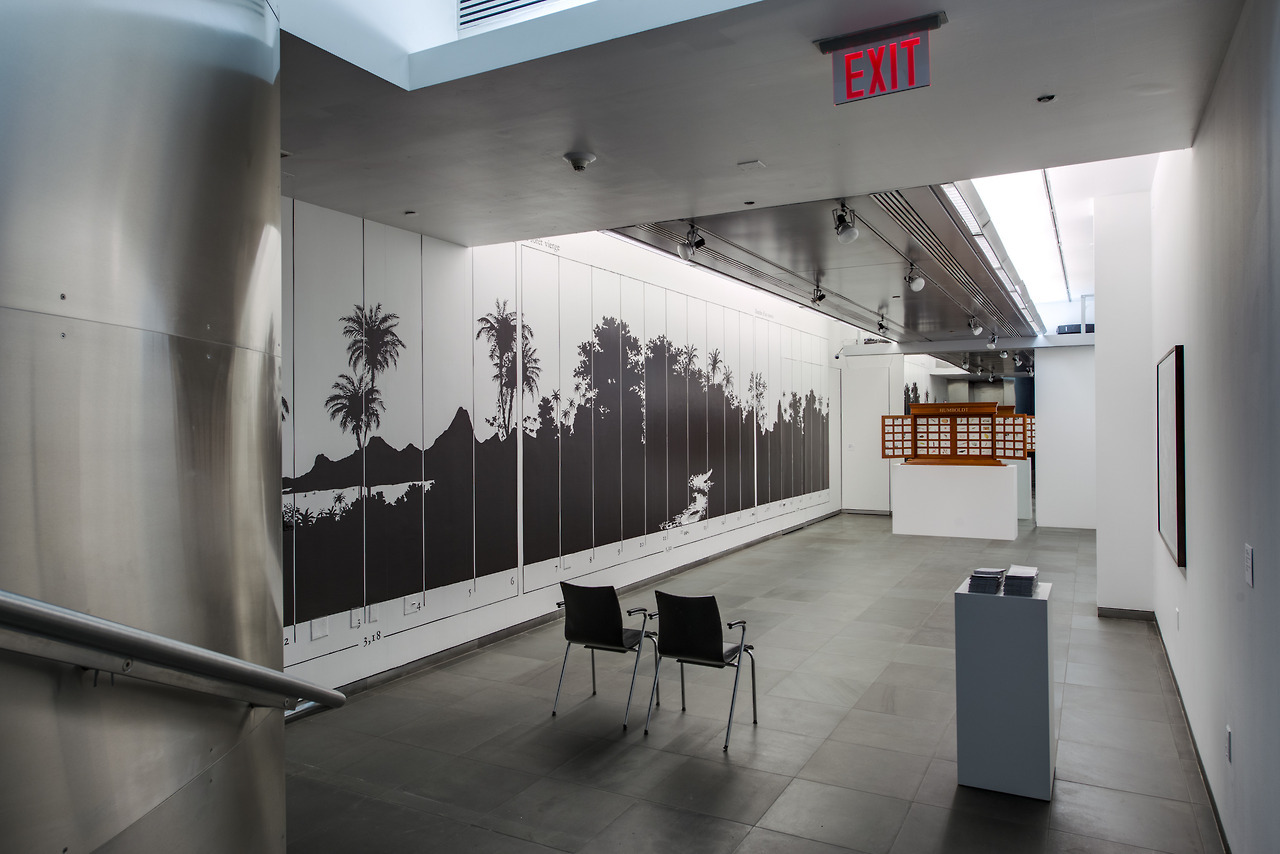I chose to study a selection of installation artists to gather ideas for my own installation, specifically artists who incorporate a variety of media into their exhibits. My own work will combine photography, possibly video, 3D objects, and sheets of material so I am keen to understand how others have combined such a variety of materials and maintained a coherency in their work.
Christian Mayer
Mayer is a German artist who works with sculpture, photography, film, and installation, often of historical objects, so I was interested in how he plays with the arrangement of objects to force a reflection on memory and history but also to help me understand what potential can be found in bringing the past (i.e. my historic event on the river) into a new encounter with the present in the exhibition.
Mayer often starts his work with historical events that have left their mark on society. His aim is to bring together different cultural, political, and social contexts together in charming and visually intense arrangements. Below we see Constructing Paradise which is a large space that is populated with a central cabinet that mimics a Victorian specimen display cabinet. Along the wall is a mural of natural history with epochs of time labelled along the bottom. Two chairs invite us to sit and contemplate what we are seeing. The mural and cabinet are separate but invite us to create a narrative as we sit in the space. I think it’s significant that the mural envelopes the viewer so they are embedded in the scene, they are part of history and maybe partly responsible for the destruction of nature, started by the Victorians with their habitual collection of flora and fauna. The chairs could be ready for interrogation and who dares sit and justify their dubious past? I like how we are being challenged to sit and justify our exploitative history.
Mayer’s work Gizmo below explored the disappearing world of the Polaroid as a starting point for a complex series of references. As for the work above, the photography surrounds a juxtaposed artefact of a group of four potted palm plants. It took me a little longer but a connection between the extinction of the Polaroid and of the rain forest (and replacement by date palm) springs out here. The neatly framed photographs don’t try to blend in with the foliage, they are in stark contrast. The artist is pointing out the interesting contrast between the extinction of technological innovation and that of the natural world. Is he expecting us to realise that we show more sorrow for the loss of a human creation than of the rainforest? This is what comes to my mind, but was it the artist’s intention? Have I got it wrong? Regardless, the simplicity of this work and the awkward comparison gives it its power.
Lori Vrba
Vrba creates assemblages and Memoir below comprised of hung photographs grabbed my attention. The photographs are sepia and sized differently but the manner of assemblage gives them a consistency that is visually effective. Even without the title, we read that this is a memory piece and there seems to be a fondness in the recollection but the chains give a harshness that confuses us a little. I wonder if these are the chains of a past relationship or an emotional blockage and reflecting on this contrast makes me think of my own memories which have a positive and negative side to them.
The interesting aspect of my own work is how the photographs have been connected to objects from history. The chains are literally linked to physical memories and by being connected together they have a richer gestalt. I have a sense of an individual who has opened a chest of memories and all their associated connections.
Janet Laurence
Laurence created the piece below called Selva Veils which is a simple set of monochrome exposures on clear acetate or transparent perspex. I include this because I enjoy its forensic aesthetic and how the images overlap and create an interplay of reflections and overlays. They float in space and speak of a dream-like experience which I enjoy but it’s the overall simplicity of the installation that is so pleasing.

Personal reflection
It’s clear that there are countless ways to mount an installation that comprises many types of media and each arrangement will significantly impact the thoughts and feelings evoked in the viewer. What I’ve learned is that the space between the different elements is not something to be afraid of, in fact, breathing space should be in abundance. In my own project, I need to separate the 3D objects (paddles and sheets) from the photographs to create that distance. As with all my previous projects, there needs to be an element of free play available for the viewer to step into the booth, look around them and make connections.
I also have many options on how to mount the photographs, some options I’m considering are below:
- Standard print and mount on Foamex
- Printing onto canvas
- Printing onto a found object
- Printing on acetate
As I’ve said in an earlier post, I don’t want the photographs to dominate the installation; they are a historical reference point and I think a stark aesthetic contrast is most appropriate. The cleanest, most simplistic presentation is likely to be the most successful for this reason, and I’m favouring a standard print on Foamex, raised off the gallery wall.




